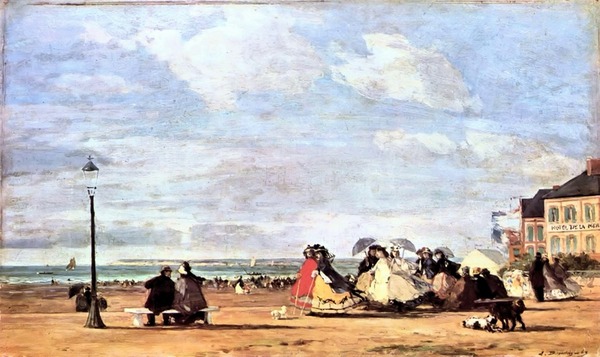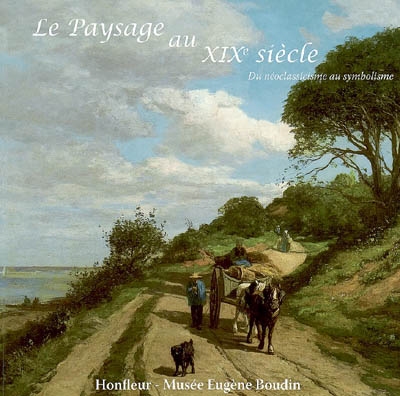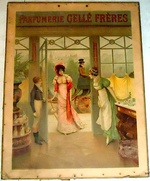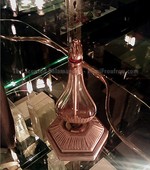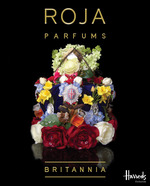Les Fleurs du Guildo & Jicky by Guerlain: An Early, 19th Century Precursor of Marine Scents & a Reexamination of Jicky's Gender & Fresh Factor {Perfume History & Facts} {Scented Thoughts}
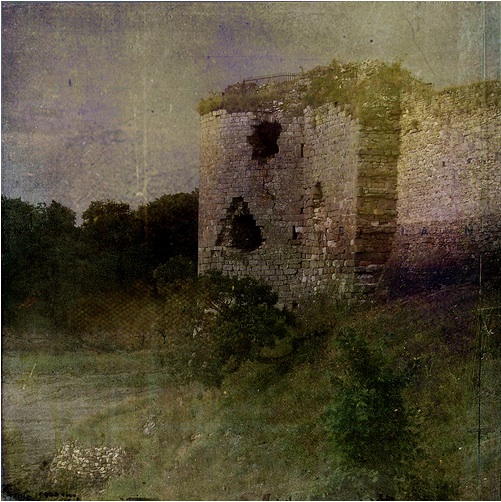
Ruins of Le Guildo by Gwen
So called marine scents have known an explosion of interest that came from the top in the 1990s, with the use of molecules such as Helional and especially Calone (discovered in 1966 by Pfizer), but that does not mean that in previous eras the motif of the sea was left blank and pushed outside of the history of perfumery. Even before Calone came into existence - pardon us for being so didactic - people had noses, enjoyed promenades by the sea, or breathing the salubrious coastal air. If a perfumer happened to be among the crowd of strollers or dreamers, then an impression for a perfume might be born.
Common sense can make us see retrospectively that it would be exaggerated a view to think that perfumes have not incorporated the experience of the seaside in one way or another and that perfumers never contributed this experience to perfumery. In fact, going further back in time, one could point out that the famous oakmoss found on the island of Chypre is a very early reference to the aromatic palette that can be experienced by the ocean, if for nothing else than sensations of dried heat and salty vegetal nuances.
One example of an early 19th century seaside motif which I have discovered is Les Fleurs du Guildo by Guerlain, which is a fascinating illustration of an early, avowed attempt at capturing the quality of the olfactory atmosphere in the region of Brittany, and in particular in the specific context of its moors expanding around the ruins of the castle of Le Guildo as it was advertised at the time.
By selecting this locale alone, Guerlain is expressing an interest for an earth-and-sea contrast. As its name indicate, this perfume wanted to distill the scent of flowers growing on the coast, the so-called Côte d'Armor....
Guerlain by choosing Le Guildo as a backdrop for a perfume is also of course choosing an eminently romantic theme which could help people imagine an abandoned castle, picturesque ruins, a wild landscape, the wind or breeze blowing from the sea. We can see also here an English influence at play, a reminiscence of the damp, drizzly atmosphere of England which is akin to the one found in Brittany. Readers of Victor Hugo will sense this atmospheric kinship even more.
Another 19th century Guerlain perfume called Parfum de Sweet Briar both testifies to Guerlain's Anglomania and a continued interest in the seaside motif.
Shore's Caprice by Guerlain ca.1874, is the perfume of Julia Forsell, the heroine of Octave Mirbeau's L'Ecuyère (1882) and again shows that one did not have to wait for New West (1992) to realize that the sea can be a source of perfumery inspiration.
Sous Le Vent by Guerlain in 1933 confirms this ongoing interest for the sea air in the Art Deco period.
In 1999, the house released Terracotta Voile d'Eté which is a more modern take on the genre, one which comes long after Huile de Chaldée by Patou yet prefers to refer to this type of sea-side perfume redolent of salicylates, i.e., suntan oil accord, rather than to a breezy 90s sensation.
Aqua Allegoria Tiaré-Mimosa in 2009 confirms this preferred olfactory orientation for the smell of sun-baked skin rather than for an impression of sea spray.
One other point I want to make is that the air in Paris itself at times smells of the sea and contributes to the sometimes exceptional softness of the air in the French capital.
The Guerlains have always been Anglophiles and learned their trade and art initially across the channel.
There is also the influence of Walter Scott in popularizing the theme of the romantic Scottish landscape with its sea-and-earth contrast. It is also the era of impressionism which was a movement to displace the painter from the studio and have him go to the source of his impressions in the midst of nature. It is very much of its time therefore for Guerlain to take a landscape as a source of inspiration. In opposition to Les Fleurs du Guildo, we find in the same series of "Les fleurs de"...Les Fleurs des Alpes: sea and mountain make the olfactory picture of the universe more balanced and complete.
Finally, we can read the following poem by Maurice de Guérin to see that the romantic mind was, as Gaston Bachelard later predicted, always attracted towards vales and water points in them. Maurice du Guérin responds to this need of the human mind, and writes Aux bords de l'Arguenon in 1833, 5 years after the creation of the house of Guerlain. The river l'Arguenon is found at the foot of Le Guildo castle. The poem reflects the sensitivity of the time and either out of chance or because the place is so rich with natural aromas ends up being written as an olfactory poem.
"Redescends vite avec l'odorante conquête,
Jette là ta chaussure et foulant le parquet
Avec tes pieds tout nus, tes pieds blancs comme du lait,
Vers ce berceau qui dort à côté de la mère,
Va délicatement, va, ma muse légère,
Encombrer ce berceau, lit d'un ange enfantin,
Et de lis et de rose, et du plus beau jasmin.
Puis regagne aussitôt le plus prochain nuage,
Ne laissant en ces lieux de ton soudain passage
Que des fleurs durant peu, mais dont la douce odeur
Se réfugie et vit longtemps au fond du coeur!"
Maurice de Guérin, Les Bords de l'Arguenon, 1833.
We can see Les Fleurs du Guildo by Guerlain mentioned in 19th century documents as early as 1885. It was considered fashionable still in 1891. The perception of the perfume which was recommended to be worn by young girls was that it was both a "wholesome and original" perfume. It was advertised as having been extracted directly from the flowers in the moorland around Le Guildo.
Without having smelled the perfume proper, and more importantly perhaps in attempting to recreate its perception at the time, we can try to recreate its personality through historical clues.
At the time, and in the same writings, a case is made that young girls should only wear light perfumes. The ideal scent for them was considered to be the Eau de Cologne and for the age class above, that is not young girls anymore but young women, a slightly more sensual incarnation of the Eau de Cologne was deemed respectable, the Eau de Cologne ambrée that had been made a bit deeper thanks to amber. It is rather clear then that Les Fleurs du Guildo was considered light and fresh enough for young girls, a pairing of qualities typically found in Eaux de Cologne.
This reasoning is further supported by the mention together of Les Fleurs du Guildo and Jicky (1889). Contrary to what is commonly thought - and here I have to revise a little summary I did based on mainstream perfume research - Jicky was in fact recommended to young, unmarried girls in 1891 in the same breath as with Le Guildo. It was proposed as an ideal perfume for the handkerchief and considered a "fashionable odor" for young ladies, as the terminology went at the time.
Jicky was not apparently considered shocking or revolutionary as often more modern historiography presents it. It is possible that if de facto men adopted it more, that it became perceived as daring to steal it from men later on. I also have an early Guerlain advertisement from the late 19th century which advertises Jicky, and not just the Guerlain perfumery as was more common at the time, under the silhouette of a woman in crinoline crossing a street an umbrella in her hand.
These elements bring up two interesting problems. For whoever has smelled Jicky in its original formulations, it can be called fresh to some extent thanks to its lavender note, but it can also be called voluptuous, heavy, even deeply sensual thanks to its natural civet note. It also betrayed a strong medicinal nuance that has been softened today. I know this from experience having smelled Jicky for the first time in my life from a 19th century crystal and silver bottle that contained remnants of it. This was not Jicky as in the 19th century since the perfume had dried up and thickened at the same time yet still smelled extremely strong, but the smell lineage to the modern version proved unmistakable as I later found out. On the other hand, that Jicky encountered in an antique bottle was closer to a 19th century version of Jicky than the current store version. The dichotomy of Jicky to this day is what I readily feel about it. I have personally always associated it with springtime in Paris due to its cool facet, with its oriental warmth evoking a transition from winter to the more clement weather of spring.
Due to these clues, I am able to imagine the scent of Les Fleurs du Guildo as a fuller-bodied freshness than what we call it now, which would have been considered entirely fresh perhaps in the 19th century. There were those Eaux de Cologne with or without amber and it made a difference. A further clue tells us that at a time when hair color and perfume were seen to have mysterious affinities, Les Fleurs du Guildo were recommended to those young girls who had blond hair, had a delicate temperament and a poetic disposition. Perfume was very much seen as part of the accoutrements of the elegant lady and thus perfumes were often aestheticized through a color perception, especially the color of one's hair or one's dress: did they match? A crucial question for the fashionable. These details further confirm Les Fleurs du Guildo as characteristic of a lighter shade in the palette of perfumer Guerlain. Historically speaking, Les Fleurs du Guildo were thought to be an ideal perfume for young blond girls in the late 19th century, a time also when light shadowy moustaches upon a feminine lip were considered erotic. We all have to imagine a slightly different world of sensory and cultural references.
To go back to the seaside motif, it probably had to be airy. We can imagine that airy lavender, fish-smelling authentic ambergris - before there was Calone - could be used to suggest the seaside air. Heather and briar could suggest that ambiance as well. There were means and there was the imagination.
It is interesting to see that Jicky in 1891 was considered fresh enough to be age-appropriate, as we say today, for young girls provided it was kept sagely in their handkerchiefs. Jicky is not only the first perfume that offered an elaborate olfactory stucture but, and this is less commonly pointed out, it was also the first to integrate the Guerlinade with its deep animalic notes and coumarin and vanilla. It is an oriental but it has a lot of the spirit of the nascent genre of the fresh fougère in it as well. Through its medicinal facet, it keeps a link to the Eau de Cologne therapeutic remedial properties. Its name again testifies to the Guerlains' taste for England.
How much was Les Fleurs du Guildo an attempt to integrate several possible influences such as the wet moor landcape battered by the winds, the airiness of heather, briar, and lavender, the saltiness and marine and sunny nuances of ambergris, the feel of flowers dried by the the coastal sun, a feeling one finds in Guerlain Jasmin? Another perfume, Quant Vient l'Eté (1910) is the ancestor of Terracotta Voile d'Eté and the contemporary version smells very much of the sea and earth contrast.
Les Fleurs du Guildo helps us think about the marine motif in perfumery and help us remember that before there was the school of Calone-based perfumes there were Guerlain perfumes with the words and notes of the sea in them. There were the beach landscapes of Boudin, the sea paintings of Monet, and the misty and fashionably dreamy quality of the scent of flowers on the coast of Normandy and Brittany.
Empress Eugenie on the beach in Trouville by Eugène Boudin.
